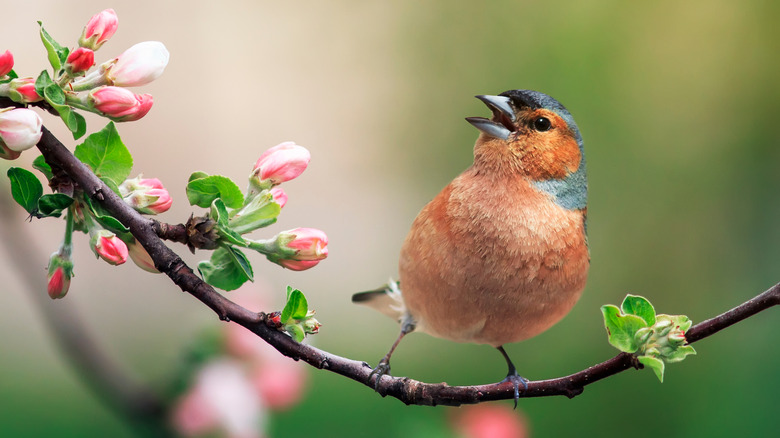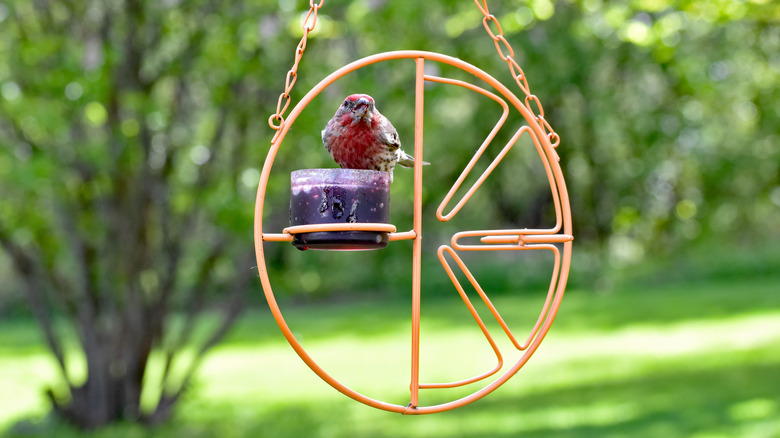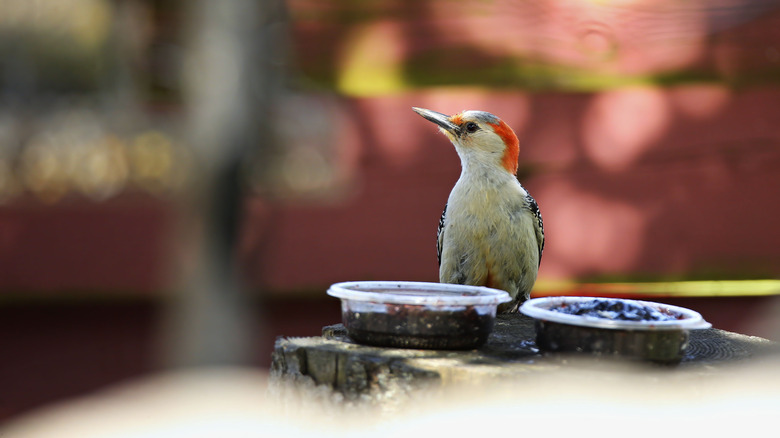The Sweet Treat You Can Put Out To Attract Birds To Your Yard In Warmer Months
We may receive a commission on purchases made from links.
Winter is tough on migratory and native birds; it's a time of cold, rain, and depleted food sources. As spring rolls around and the world starts to warm up again, nectar-loving birds like orioles, hummingbirds, and gray catbirds (among many others) are ravenous for a nutrition boost. If you love PB and jelly sandwiches, you likely have a jar of the sweet stuff they already need in your pantry. That's right — you can attract more songbirds to your yard with a simple dob of jelly. You just need to ensure you use the right kind to avoid harming rather than helping hungry avian visitors.
Nectar is the food of choice for over 50 species of birds across North America. There are the aforementioned orioles, hummingbirds, and catbirds. Depending on where you live in the US, putting out jelly for birds could also get you a visit from robins, finches, woodpeckers, bluejays, cardinals, thrashers, warblers, tanagers, mockingbirds, and grosbeaks. As nectar and fruit lovers, these birds all have similar feeding habits, so they'll be attracted to the same types of jelly and feeding stations.
Choose your jelly wisely
Go for a dark grape or another dark fruit jelly when buying this common condiment. Ensure the jelly is free from high-fructose corn syrup, preservatives, and artificial colors and flavors. Avoid jellies containing artificial sweeteners — they offer no nutritional benefits for birds and may even be dangerous for our feathered friends. Nectar feeders get their nutrition from the natural sugar in the jelly, and they may not be able to digest artificial sweeteners properly. Another option is to make your own jelly using wild grapes, oranges, or berries like blueberries and blackberries. You can also buy specially made bird-feeding jellies like this Songbird Essentials Birdberry Jelly, sold online at Chirp for $8.99.
Once you've sourced suitable jelly, set it out for the birds in a feeder. A small dish no more than four inches in diameter and about one inch deep is ideal. Plastic is okay, but a ceramic or metal dish is more hygienic. You can DIY your jelly feeder or find one online. This hanging feeder on Amazon for less than $16 has appropriately shallow feeders made of glass and blunt spikes for orange halves — another nectar-bird favorite.
When to put out jelly for birds
Overall, wild bird feeding seems to be a positive activity. A three-year study of wild bird populations in Illinois, USA, published in the journal Conservation Physiology in 2015, noted that birds with access to supplemental food from feeders were physiologically healthier than their solely wild-fed counterparts. However, there are some guidelines to heed before hanging a bird feeder full of jelly.
Put your jelly dishes or feeders out in the early spring: April in the U.S. South and early May if you live in the northern states. Jelly or other sugary treats like nectar are good food for migrating birds, like orioles, that need a nutrition boost in the spring after their long flight. It's not so great for chicks, who need more protein than sugar, so avoid putting out jelly in June or July when they're being fed insects by their parents. It can also melt in the hot summer weather and stick to birds' feathers; they can't fly and get distressed, requiring specialized rescue and cleaning.
Feeders need cleaning every few days with hot water to eliminate harmful fungal and bacterial growth, as per the National Audubon Society. If you spot mold in the jelly, replace it immediately. If you're worried about some of the reported possible adverse effects of eating sugary foods designed for human consumption, like it being addictive for birds or disrupting their ability to process sugar long-term, share fresh fruit halves (apples, oranges, grapes, or pears) instead.


